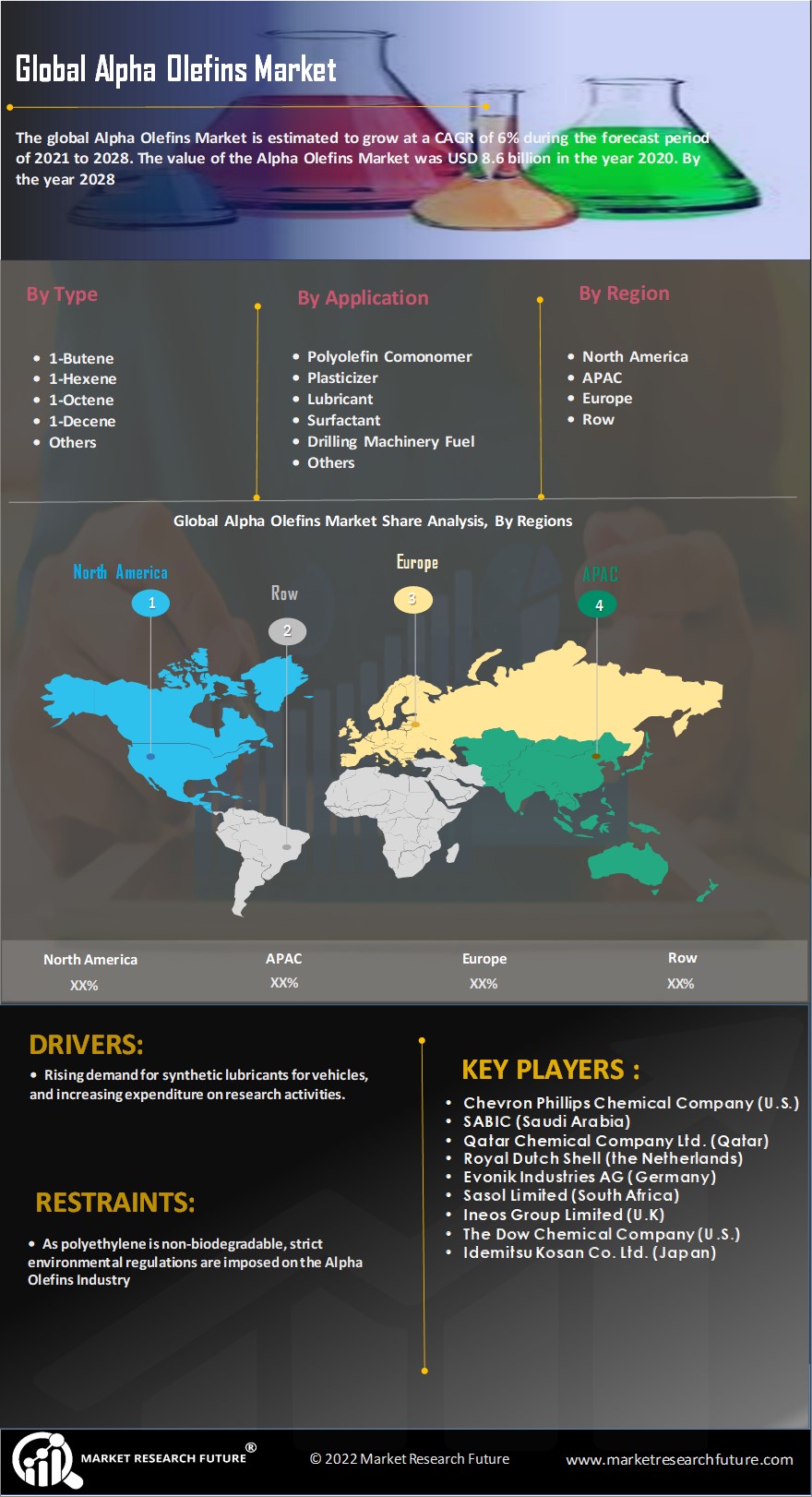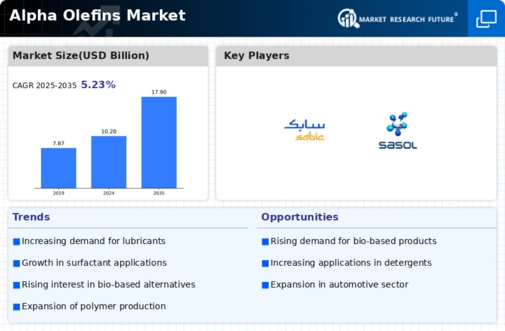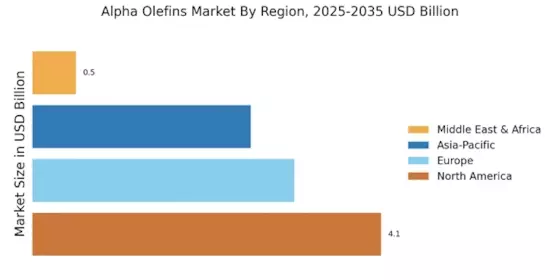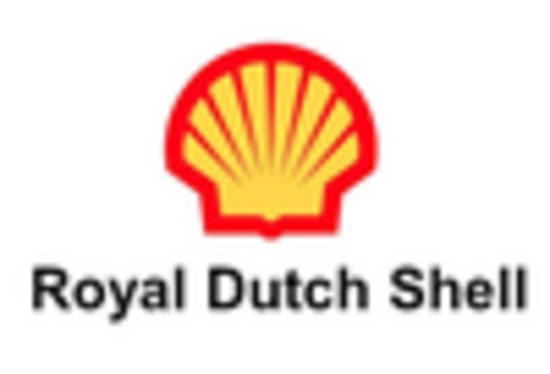Rising Demand for Surfactants
The Alpha Olefins Market is experiencing a notable increase in demand for surfactants, which are essential in various applications such as detergents, personal care products, and industrial cleaners. This surge is driven by the growing consumer preference for eco-friendly and biodegradable products. In 2025, the demand for surfactants derived from alpha olefins is projected to reach approximately 3 million tons, reflecting a compound annual growth rate of around 5%. This trend indicates a shift towards sustainable formulations, thereby enhancing the market potential for alpha olefins as a key ingredient in surfactant production.
Expansion of End-Use Industries
The Alpha Olefins Market is poised for growth due to the expansion of various end-use industries, including automotive, construction, and consumer goods. As these sectors continue to evolve, the demand for high-performance materials is increasing, which in turn drives the need for alpha olefins. For instance, the automotive industry is increasingly utilizing alpha olefins in the production of lightweight materials and components. This trend is expected to propel the alpha olefins market, as manufacturers seek to meet the rising demand for innovative and efficient materials across diverse applications.
Growth in Polyethylene Production
The Alpha Olefins Market is closely linked to the expansion of polyethylene production, which is a primary application of alpha olefins. As of 2025, The Alpha Olefins Market is anticipated to exceed 100 million tons, with alpha olefins serving as crucial feedstock for producing linear low-density polyethylene (LLDPE) and high-density polyethylene (HDPE). This growth is attributed to the increasing demand for packaging materials, automotive components, and consumer goods. Consequently, the rising polyethylene production is likely to bolster the alpha olefins market, creating opportunities for manufacturers to innovate and expand their product offerings.
Advancements in Production Technologies
The Alpha Olefins Market is benefiting from advancements in production technologies, which enhance the efficiency and cost-effectiveness of alpha olefins manufacturing. Innovations such as improved catalytic processes and the development of more efficient reactors are enabling producers to optimize yields and reduce energy consumption. As a result, the production costs of alpha olefins are expected to decrease, making them more competitive in various applications. This technological evolution is likely to attract new investments in the alpha olefins sector, further stimulating market growth and expanding the range of applications for these versatile compounds.
Increasing Use in Lubricants and Additives
The Alpha Olefins Market is witnessing a growing utilization of alpha olefins in the formulation of lubricants and additives. These compounds are valued for their superior performance characteristics, including thermal stability and low volatility. In 2025, the lubricant market is projected to reach approximately 40 billion USD, with alpha olefins playing a pivotal role in enhancing the performance of engine oils and industrial lubricants. This trend indicates a shift towards high-performance lubricants, which is likely to drive the demand for alpha olefins, thereby contributing to the overall growth of the market.


















Leave a Comment